Auralic Aries G2
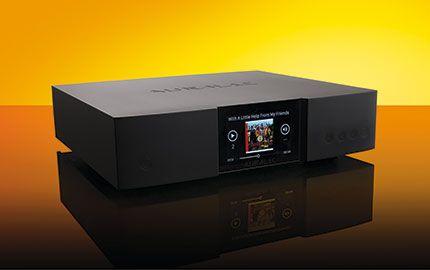
 Network audio has become a big part of our hi-fi listening habit as more of us get more comfortable with the prospect of streaming music from pay services like Tidal and Qobuz or from a networked server containing a music library at home. It’s an area that’s seen considerable expansion in the last decade, but is still pretty much dominated by a few familiar names.
Network audio has become a big part of our hi-fi listening habit as more of us get more comfortable with the prospect of streaming music from pay services like Tidal and Qobuz or from a networked server containing a music library at home. It’s an area that’s seen considerable expansion in the last decade, but is still pretty much dominated by a few familiar names.
For any company to make inroads into this sector, it needs to have a front end that goes the extra mile at a competitive price. Auralic has been impressive in this regard and first began to carve itself a reputation for well thought-out and capable products at competitive price points with the likes of its Aries Mini music streamer (HFC 425) and the Altair DAC/preamp with music streaming (HFC 428). The Aries G2 on test here might best be seen as phase two of the company’s plan, and is the first of its new G2 Series of components (see boxout). It’s also a little unusual in that it is a streaming transport that’s dependent on users adding an external DAC to route music from it to a hi-fi system. Historically, this hasn’t always been the most suitable approach for DSD music files, as the selection of digital connections will struggle to transmit this to an external converter.
Happily, Auralic has ensured that there are two connection options to overcome any such issues. The first is via a USB-A port that works in a driverless configuration and over the course of my time with the Aries G2, it works seamlessly with any DAC I try. The other option is all new and entirely bespoke. The Aries G2 is fitted with Lightning Link, which is a bi-directional 18Gbps digital hookup that uses an HDMI connection rather than anything proprietary. What this means in terrestrial terms is that the add-on G2 components – Vega, Sirius and Leo – have the means to handle all sorts of extraordinary hi-res files and also to lock the components together and suppress jitter – a standard criticism of the two-box approach. For those music streaming fans that aren’t quite on the bleeding edge of technology, the Aries G2 is also fitted with AES/EBU, coaxial and Toslink digital outputs that cater for transmission of PCM files at up to 24-bit/192kHz.
These legacy connections access the company’s Tesla streaming platform that is capable of handling files up to 32-bit/384kHz PCM and DSD512. These files can be accessed over wired and wireless network connections (although Auralic suggests that if you are looking to use the larger file types, you should go for a wired setup), but there is an interesting addition to the G2’s spec in the form of an internal bay for a 2.5in hard drive. This allows the Aries to become a self-contained server. You can additionally attach a hard drive externally via a dedicated USB connection if the idea of rooting around inside your shiny new streamer doesn’t appeal.
New look
Externally, the Aries G2 is all new. The case is built to a three-quarter-width size and has a new industrial design. It’s clean and ultra-modern, but not entirely free of foibles. Auralic has dispensed with the rotary push dial control that is used by the Altair and instead substituted four fixed buttons. These are beautifully recessed into the front panel, but are so dark they are almost invisible even in a well-lit room and the legends are impossible to discern. These are partnered with a 3.97in colour display that shows album art, track title, time and play/pause – but not album title or sample rate – for the file being streamed. The top plate extends over the rear inputs making it look extremely neat, but connecting cables into the socketry and ports from above is harder than it need be. The fit and finish is extremely good, though, and the Aries G2 has the presence and sense of quality that fits with the relatively high asking price.
Auralic’s Lightning DS control app is another priceless advantage that the Aries G2 has over its rivals. This is unchanged from the version that we’ve seen on previous components, but this really doesn’t matter. By rendering the library on the control device, Lightning leaves most rival control apps standing in terms of its speed and responsiveness to accessing music files. Its unfussy playback options (there’s no need to queue material, for example) and the integration of Tidal and Qobuz streaming services is extremely good. The only downside is that it is only available for iOS, but if this is the price of such a good piece of software, it’s an acceptable trade-off.
Setup is simple enough. A wired connection requires no work at all and the wireless setup is logical and easy to follow. The USB output is also entirely straightforward. I find the most reliable method is to make the connection and then turn the DAC on first. The Aries G2 works happily with a Chord Electronics Hugo 2 (HFC 428) and an Oppo Sonica DAC connected in this way and proves entirely stable and shows the identity of the DAC it’s connected to via its USB port on the control app’s screen.
Sound quality
As the Aries G2 is fundamentally a transport rather than a complete playback device, its performance is shaped by the DAC that you choose to connect it to, but within that statement are some caveats that largely come out in favour of the Auralic. The first is that across the three devices I use for listening – the aforementioned Hugo 2 for USB, a Naim ND5 XS (HFC 352) via optical and a venerable Audio Note DAC 1.1 on the coaxial input – the connections are all silent and extremely stable, with no clicks and pops or interruptions to playback. The gapless playback mode works perfectly on every format I have at my disposal.
The Auralic gives the best possible start for your decoding device and the performance it offers with the Hugo 2 playing a 24/88.2 download of Lynyrd Skynyrd’s I Need You is very impressive. The music rises from an utterly silent background and there is an almost analogue warmth to Ronnie Van Zant’s vocals. There is a huge amount of sophistication present in the mechanics of both of these devices, but the manner in which it is deployed is so beautifully seamless in its execution that it never so much as snags the attention, letting you focus on the music instead. DSD is also transferred without issue and the DSD64 download of Depeche Mode’s Clean is relayed with real potency and depth.
The character of the performance is largely defined by the DAC and changing to the more forceful and tonally darker Naim ND5 XS shows this to good effect. The muscularity of the Naim with a 24/48 download of Yossou N’Dour and Peter Gabriel performing In Your Eyes is very apparent. There is an effortlessly deep and controlled bass that underpins this sizeable stadium recording and greatly aids the general sense of believability. The Naim’s innate rhythmic ability is also completely unaffected by receiving the signal from the Aries G2, which suggests that while Auralic might have some very clever jitter reduction technology in the pipeline, the performance of the unit is already very good.
Of course, you can go completely in the other direction and select something like the Audio Note – which is radically different in its presentation – and the results are no less impressive. A 16/44.1 rip of Martha Tilston’s Stags Bellow is sublime. Her unique tone and singing style is presented with startling clarity and there is an immediacy and sheer realism to the performance that draws you into the music in a way that the more sophisticated DACs can sometimes struggle to achieve. The Audio Note shows up an unusual feature of the Auralic that is very useful in these circumstances. If you enter the IP address of the Aries G2 into a computer on the same network, you can limit the maximum sample rate to a fixed value that the DAC can handle – in this case 44.1kHz. Material at higher sample rates will be down sampled to work at this rate and it means that your whole library can be listened to even if the DAC can’t normally handle some of the files it contains. It is attention to detail like this that marks the Auralic out as a seriously impressive streaming transport.
Conclusion
What the Aries G2 does is take every aspect of network audio that the brand has been perfecting with its previous products and places all of its know-how into a seriously accomplished piece of hardware. The high price for what is in effect half a streamer won’t appeal to everyone, but as the basis for an ultra-high performance and flexible and easy to use network audio front end, the Aries G2 really does need to be on any worthwhile audition list. ES
DETAILS
Product: Auralic Aries G2
Price: £3,899
Origin: Netherlands/China
Type: Network streaming transport
Weight: 7.2kg
Dimensions (WxHxD): 340 x 80 x 320mm
FEATURES
● Digital outputs: 1x Lightning Link; 1x USB-A; 1x AES; 1x coaxial; 1x optical
● AirPlay; aptX Bluetooth wireless
● Tidal and Qobuz music streaming services; internet radio
● Internal bay for add-on HDD
Distributor: Auralic
Website: auralic.com
Clocking on
The Aries G2 is the first member of the four-strong G2 Series that can be combined in various arrangements depending on your requirements. Its most logical partner is the Vega G2 DAC (£5,499). This has matching Lightning Link input to lock both devices together for best results. The Vega G2 is capable of decoding anything the Aries G2 can send to it and has a selection of digital filters to adjust the sound. Confusingly, the Vega G2 also has streaming hardware built in so it doesn’t need to be partnered with the Aries G2 to work as a network streamer.
Coming later in 2018, the other two members of the series are more specialised, but also more technically interesting. The Sirius G2 is an upsampling processor that can also apply room correction to a signal in the digital domain. The Leo G2 is an external word clock designed to sync up other devices connected via the Lightning Link. Auralic claims with the Leo G2 in place, the combinations offer best-in-class jitter and close in-phase performance. All components are built in the same casework that will make for an elegant and serious-looking stack.
 Read the full review in issue 431
Read the full review in issue 431
 |
Inside this month's issue: Arcam Radia A25 integrated amp, iFi Audio iDSD Diablo 2 DAC/headphone amp, Eversolo DMP-A8 streamer/DAC/preamp, Line Magnetic LM-845IA valve amp, Record Store Day Spring Drop, standmount loudspeaker Group Test and much, much more
|




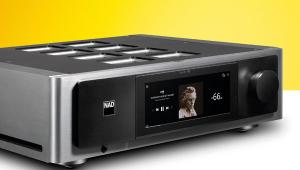
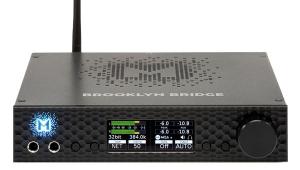
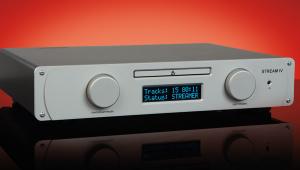
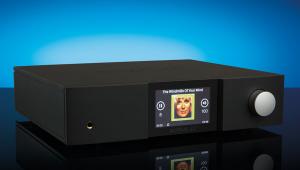
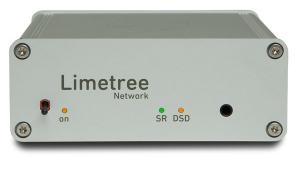

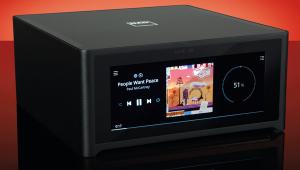

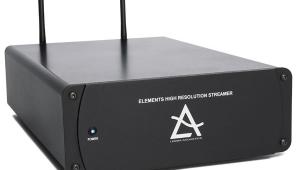
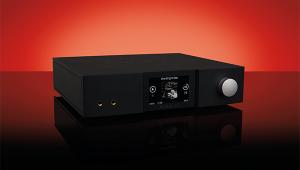
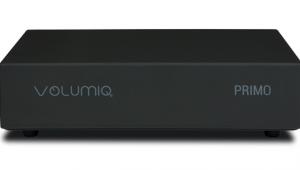
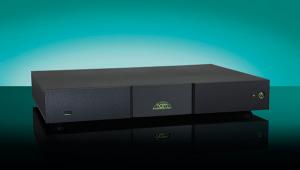





























.jpg)



